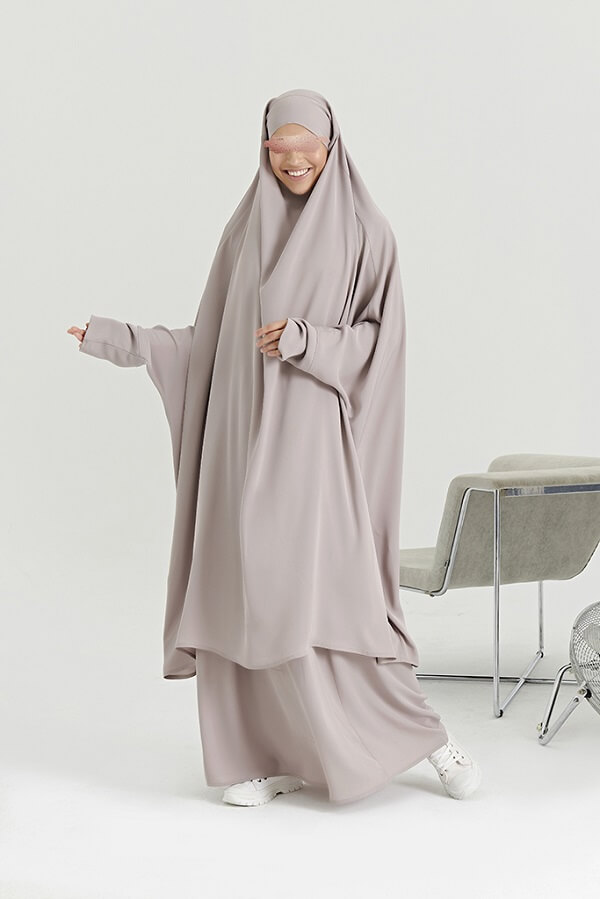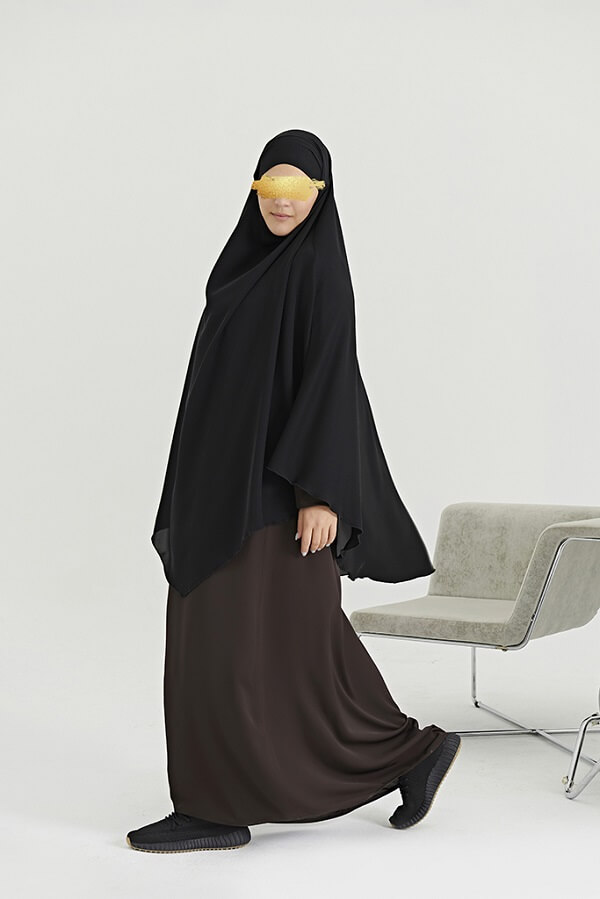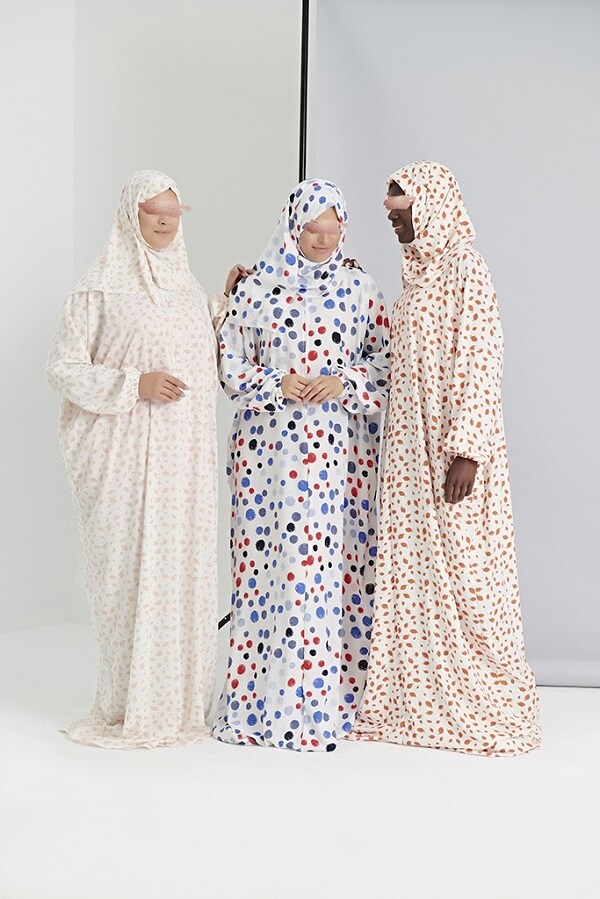After a very long and very turbulent year, Umrah has reopened, so Muslims all around the world are making the necessary preparations to begin traveling to Makkah.
A major part of these preparations is, of course, making sure to have the appropriate clothing to enter the state of the Ihram.
You might be worried and confused about what kind of clothes you can wear during Umrah, and let’s be truthful, many of us were during our first time performing Umrah or Hajj. Pilgrimage is an honor, and you naturally want to make sure you get every detail right, which can be daunting!
But don’t worry, you’re in the right place to clear your confusion.
Guidelines for Ihram
The ruling on Ihram attire for men is clear enough; two plain white, unstitched cloths that they then wear in the prescribed manner. However, what counts as appropriate attire for women seems open to interpretation.
The guidelines of Umrah and Ihram clothing for women only state what you can’t wear instead of what you can, which can be very confusing. The guidelines for what women can wear are the following:
- Your clothes can’t be form-fitting,
- They can’t be so thin that they are see-through
- You can’t allow them to be so short that your ankles or wrists are visible
- They can’t cover your face and hands.
- Your clothing should not imitate men’s clothing.
And while that information is important to know, a lot of clothes could comply with those guidelines.
What Should You Wear For Umrah?
To make things easy, scholars recommend clothing we typically think of when we think of Muslim women performing Umrah, which means products like Abayas, jilbabs, hijabs, khimars, and whatnot. And yes, even full-length, full-cover maxi dresses (as long as all conditions are met)!
There aren’t any specific color recommendations, although most women choose to wear black. And of course, opposing what you might believe, you don’t have to wear either black or white.
We already know that it can’t be see-through, which means that the fabric needs to be thick enough not to let light through but still be suitable for Saudi Arabia’s harsh sun.
We recommend opting for Abayas or Jilbabs made of lightweight, breathable fabrics that you can layer on top of other clothing without the risk of overheating.
1. HIDAYAH Jilbab Set – WHITE SAND
The White Sand Jilbab set can be found in a light sand color that checks all the boxes for modesty while also being suitable for all seasons, the light color also means that it won’t absorb too much heat from the sun.
This also has buttoned cuffs and a skirt on elastic band, so don’t worry – we have you covered. And since this lightweight Jilbab has a lightweight Abaya crepe alongside the short overhead cover jilbab, you can find the perfect combination for any season for Umrah.
2. ZAHRA Jilbab Set – CINNAMON
You could also choose a two-piece set like the cinnamon jilbab set. It’s a beautiful but subtle color that you could wear even after returning from Umrah in Makkah. Moreover, this has a wide cut, buttoned cuffs, and a maxi skirt on an elastic band for maximum comfort and ease, so be assured!
Plus, soft abaya crepe is used as the fabric, which makes it lightweight, and with a beautiful fall – you won’t be disappointed with the results.
Both sets have buttons on the cuff, which makes performing wudhu (ablution) in them much more convenient. They are also quick-drying, which is another huge pro!
3. EEMAN Khimar Tie Back – BLACK
For women that have a baby they’re still breastfeeding, we recommend an abaya with a khimar, like this one. This Kimar falls to the elbows, so nursing sisters will find this useful as it will allow them to still feed their babies without risking exposing themselves during their Umrah pilgrimmage.
This product is also tie-back, comes in a diamond cut, and provides you with an elegant atmosphere.
This is, in short, an easy-to-wear and modest garment that is both beautiful and provides adequate coverage for all your needs. In addition, the premium lightweight soft crepe allows for crease-resistant flow and easy ironing. It’s perfect for travel!
As far as what goes under your abaya, that’s really up to you. You can wear whatever you’re comfortable in so long as it is clean. Although we would recommend baggy clothing just in case the outerwear you have does become see-through under the sun, heat, rain, or other elements.
What Else?
Umrah doesn’t take very long. Typically, you’re done in one evening. However, you’re going to be in Makkah for longer than that, and as such, packing more than one outer garment is recommended. Your abaya or Jilbab might get dirty, and you don’t want to wear dirty clothes in Masjid Al-Haram.
4. Prayer Dress for Umrah
You might want to invest in this product, which will definitely be useful during the trip. Additionally, you can also wear it afterward, on any occasion.
A prayer dress with a front zip (like the one we recommended above) is extra convenient because you can avoid the hassle of buttoning and unbuttoning, and a zipper is more secure than Velcro.
This dress is available in wide cut and one size, with an attached scarf for easy matching and efficiency.
Made from soft and light viscon fabric, this product is extremely easy to slip on, and covers you from head to toe, leaving no space for criticism. Plus, it has comfortable stretchy cuffs on plastic!
A Few More Tips For Umrah Clothing
Another thing to remember is that you enter the state of Ihram before you reach Makkah, and so you will most likely be finding yourself changing on the plane. If your dress is so long that it touches the floor, we recommend changing it early on during your flight to ensure that the dirt and other impurities don’t get on your clothing, dress, or abaya.
Shorter jilbabs with skirts will be more convenient because you can wear the skirt as normal before boarding the plane and then throw on the Jilbab when you’re ready to enter the state of Ihram.
When you buy any article of clothing, you naturally want to get more wear out of it. That is why we also recommend investing in abaya and jilbab dresses that you can wear for more than just Umrah or Hajj.
(Psst! The great thing about our jilbab sets and maxi dresses is that they are modest and subtle enough to be appropriate for Hajj and Umrah but beautiful and stylish enough to be worn on any occasion afterward, too! These two-piece Jilbabs are also great for non-full-time jilbab wearers because if you ditch the Jilbab; you still have a beautiful maxi skirt!)
The Bottom-Line
We’ve all been anxiously awaiting the moment that Saudi Arabia opens its borders for pilgrims. Now that it’s finally here, it’s our responsibility to prepare well.
Making sure we choose the right garments to wear is important so that Allah may be pleased with us and we can stay comfortable.
This article has hopefully helped make this decision easier for all Muslim sisters. Good luck in your Umrah, and may Allah increase your rewards!




